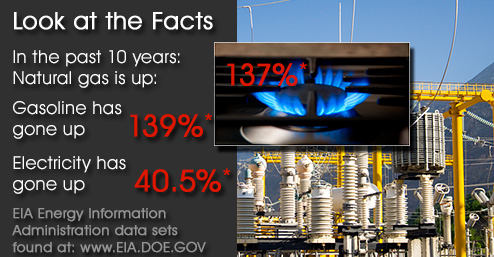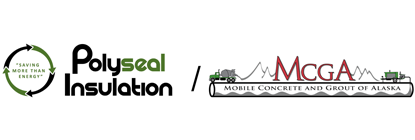- >CALL ☎
- >TEXT 💬
Spray Foam
Advanced Insulation Science that outperforms all other types of insulation
Our expert technicians use industry-leading materials to deliver a seamless, air-tight seal, maximizing energy efficiency and creating a more comfortable living environment for you and your family. Schedule your free estimate today and start experiencing the benefits of exceptional insulation!

Spray Foam Advantages
Without proper air sealing, a building can lose a great deal of its efficiency through air leakage. It's one of the primary causes of hot and cold spots that can cause discomfort for owners. But as with any building product, insulation is only as effective as its installation and where it's applied. Spray foam is only installed by qualified contractors. That's why builders are choosing Spray foam to insulate their homes.
Why Spray Foam
- High R-Value per inch provides outstanding thermal performance, so it minimizes hot and cold spots that can affect the efficiency and comfort of a building.
- Rigidity provides added structural integrity to your walls.
- It acts as a secondary moisture vapor barrier to help reduce the risk of moisture intrusion in the wall cavity.
Gone are the days of harmful, inferior traditional insulation. Our Spray Foam insulation provides you with:
Spray Foam Applications
Spray Foam Benefits
Spray Foam insulation is the future of insulation. Advantages exist for financial savings, health, building efficiency and greener environment.
Spray Foam insulation is the future of insulation. Advantages exist for financial savings, health, building efficiency and greener environment.
Save on Utilities
's Foam Insulation expands around every void and seals all air infiltration, the primary source of energy loss.
Indoor temperatures stay constant, allowing decreased use of heat or air conditioning. This translates to savings on utility bills and extends the life of your heating and cooling equipment by four times.
While the initial costs of installation may exceed the cost of fiberglass insulation, in the long term Biobond is significantly more cost-effective.
Insulation incentive information is available by the Database of State Incentives for Renewables & Efficiency (DSIRE) (link opens in a new tab), a comprehensive source of information on state, local, utility, and federal incentives that promote renewable energy and energy efficiency.

Breathe Clean Air
's Spray Foam insulation eliminates air infiltration and seals a building so tightly that an air-to-air exchanger must be installed. This results in premium indoor air quality (IAQ) because dust, fiber, pollen and other pollutants have no way in.
Our foam application emits no VOC's or CFS's during application or throughout the life of the product.
Inhalation of toxic molds has proven to be a problem for homeowners and insurance companies. ' Spray Foam insulation eliminates breeding ground for mold because it eliminates the entry of mold spores and prevents moisture accumulation.
Since spray foam expands into the smallest cracks and holes, it has been proven to reduce the entry of unwanted pest and insects. Spray foam is a polyurethane product and does not act as a nesting ground or source of food for pests.

Create Structural Strength - The application of spray foam actually strengthens a building structure. The expanding foam fills the gap between each wall, floor or roof cavity. The studs, joists and sheeting are bonded together creating optimum structural strength. After curing, spray foam is durable and will not shrink, settle or disintegrate over time.
Save on Utilities

's Foam Insulation expands around every void and seals all air infiltration, the primary source of energy loss.
Indoor temperatures stay constant, allowing decreased use of heat or air conditioning. This translates to savings on utility bills and extends the life of your heating and cooling equipment by four times.
While the initial costs of installation may exceed that of fiberglass insulation, in the long term Biobond is significantly more cost-effective.
Insulation incentive information is available by the Database of State Incentives for Renewables & Efficiency (DSIRE) (link opens in a new tab), a comprehensive source of information on state, local, utility, and federal incentives that promote renewable energy and energy efficiency.
Breathe Clean Air

's Spray Foam insulation eliminates air infiltration and seals a building so tightly that an air to air exchanger must be installed. This results in premium indoor air quality (IAQ) because dust, fiber, pollen and other pollutants have no way in.
Our foam application emits no VOC's or CFS's during application or throughout the life of the product.
Inhalation of toxic molds for homeowners and insurance companies. ' Spray Foam insulation eliminates breeding ground for mold because it eliminates the entry of mold spores and prevents moisture accumulation.
Since spray foam expands into the smallest cracks and holes, it has proven to reduce the entry of unwanted pest and insects. Spray foam is a polyurethane product and does not act as a nesting ground or source of food for pests.
Create Structural Strength - The application of spray foam actually strengthens a building structure. The expanding foam fills the gap between each wall, floor or roof cavity. The studs, joists and sheeting are bonded together creating optimum structural strength. After curing, spray foam is durable and will not shrink, settle or disintegrate over time.
Healthier Indoor Living Environments
By tightly sealing around all crevices, Spray Foam reduces the amount of outdoor pollutants and allergens that enter the building structure.
Our formulas contain no HCFCs, VOCs or Formaldehyde making our Spray Foam insulation systems free of toxic air contaminates.
is committed to providing consumers with a healthier, safer, more comfortable living environment.
Watch Designing Space's segment on the Benefits of Spray Foam Insulation:
Great Investment
Investing in products to make homes more energy efficient pays significant dividends over a lifetime - with none of the wild fluctuations of Wall Street.
You can easily compare the energy costs of an average home and an energy-efficient home in your area and calculate how much you can save by making your home more energy efficient
Insulation contributes to:
Saving You Money
How can you tell it's a insulated home?
Live in it.
Boost your home's resale value. A well-sealed home is a better performing home. And that can affect your home's resale. Home inspections and lower energy bills will confirm Spray Foam's superior thermal efficiency.
So investing in Spray foam insulation not only enhances the comfort, energy efficiency and structural integrity of your home, it also can pay back again when it comes time to sell your home.

Real Savings
Assume a home has 2,500 square feet of finished living area and will cost an additional $5,000 for Spray Foam insulation. Assume that 80% of that $5,000 investment will be financed, resulting in a $4,000 loan and a $1,000 down payment. At a 7% interest rate, the monthly loan would increase by $26.60 per month, or approximately $6.65 per thousand per month.
Now consider the cost of heating and cooling the same home. We will use an average cost of $200 a month for a standard fiber glass insulated home. The actual cost will probably be much higher.
By insulating the home with Spray Foam in both the walls and ceiling, the heating and cooling cost will be at least 40% less than the fiberglass home with the same R-value. This calculation shows a potential average savings per month of $80.
| Invest $26.60 per month and get back | $80.00 |
| Estimated Average Monthly Heating/Cooling Cost | $200.00 |
| Average 40% Saving per Month with Spray Foam | $80.00 |
| Yearly Savings with Spray Foam insulation | $960.00 |
This reflects a savings of almost $1,000 per year in energy costs. If you take the $1,000 per year and divide it by the $5,000 costs, the calculation gives you a 20% return on your investment. Where else can you get that kind of return?
The savings will be even greater if natural gas, propane, heating oil and electricity costs continue to increase as predicted. Your investment in a Spray Foam package will save you money month after month.
Building Science Experts
Nobody understands the science of building better than .
If you want to build a thermally efficient and airtight home, it's not enough just to insulate. You must choose the right insulation and air sealing system for the application, and be sure it's properly installed.
Did you know.. An improperly insulated and sealed home delivers 4500 lbs. of excess greenhouse gases into the air each year? It can also waste 20 percent or more of the energy used to heat and cool the home.
Our Building Science experts understand the principles of heat, air and moisture flow, and how the building envelope interacts with a building's mechanical systems as well as its occupants.
N.A.S.A. applied one-inch of spray-on foam insulation on the Space Shuttle's External Tank that serves to insulate the tank. The closed-cell foam used on the tank was developed to keep the Shuttle's liquid hydrogen fuel at minus 423 degrees Fahrenheit and the liquid oxygen tank at near minus 297 degrees Fahrenheit even as the tank sits under the hot Florida sun while preventing a buildup of ice on the outside of the tank.
Properly insulating and sealing your homes with Spray Foam is a greener alternative.
We can help you in specifying the right insulation system for our local climate. Call or Fill Out Our Contact Form to Get in Touch with our Building Science experts.
It is now well established and accepted by most architects and builders that controlling air infiltration is the best and most cost-effective means of reducing wasteful heat loss and providing a comfortable indoor environment.
Most architects tend to design structures that are tight and energy efficient by incorporating the latest in proven, energy saving construction details into their drawings.
Unfortunately, too many buildings still perform poorly. Why is this?
We have found that since there is no performance specification to dictate building construction, there is no guarantee when it comes to building performance. Regardless of the contractor's ability, tight buildings are not created from a list of materials and drawings in the absence of specifications that dictate the building's designed environmental performance.
takes a different approach
To improve building performance, our company focuses on the basic building science principle that air infiltration compromises the effectiveness of the building envelope. Our approach is incremental - areas of infiltration are diagnosed and fixed in order of magnitude. This provides the most thorough and cost-effective solution possible.
has satisfied clients. Our clients have been extremely pleased as they benefit from cost-savings and an immediate improvement in comfort.
We operate two-part urethane injection equipment to superinsulate new and old buildings. Included in this equipment are special nozzles and guns to seal cracks and small openings which effectively stops infiltration that cause poor thermal performance.
There are other urethane contractors who provide typical spray foam services; however, very few go beyond the installation of conventional spray-roofing and spray-wall insulation processes.
Our capabilities, while serving these common markets in some cases, are specially designed to meet the unconventional needs of specialty markets.
By employing standard and custom equipment which processes foam through both spray and injection techniques, we can utilize numerous chemical systems with varying densities, speeds, closed-cell content, fire rating, vapor permeability, and other desirable environmental characteristics.
While there may be other foam contractors who provide spray and injection services, to the best of our knowledge, we are the only company that currently uses "ratio monitoring" equipment in the field for this process. Ratio monitoring enables our technicians to maintain the exact chemical formulation (mix) for the duration of the installation process.
It is impossible to guarantee that the appropriate mix is being maintained without the use of this equipment.
WHY CHOOSE US
PREMIER INSULATION
We start with a complimentary, in-home consultation with one of our licensed insulation experts. You will be quoted fair prices - with no hidden fees - and provided with a reasonable installation timeline from start to finish. Our estimates are sent directly to your email inbox, where you can see line-item pricing as well as terms and conditions.
We Keep Our Promises
Trust is the cornerstone of our long-term success. We have served thousands of happy clients and look forward to serving you!
YOU'RE IN GOOD HANDS
WE DO IT RIGHT
We show up on time, maintain a tidy job site and perform high-quality work.
WE DO IT SAFELY
Keeping you and your family safe is the most important thing we do.
WE STAND BEHIND OUR WORK
has the best warranties in the business.
WE GUARANTEE YOUR SATISFACTION
Frequently Asked Questions
spray foam insulation is professionally installed at the same point in the construction cycle as other types of insulation. That is, it should be installed after the rough plumbing, electrical wiring, and heating and air conditioning ducts have been installed, but before the interior walls are completed in new home construction. In some cases spray foam also can be applied in older homes, to the inside of roofs and under floors after construction has been completed.
A two-part mixture is applied by trained applicators to the inside surface of exterior walls, to the underside of the roof, and beneath floors in basements and crawlspaces. The spray mixture expands rapidly to fill all cracks and voids, completely and permanently adhering to wood, masonry, metal studs and joists.
There are two basic types: closed-cell, rigid spray foam and "soft" or semi-flexible open-cell spray foams. See the article Learning the Difference between 1/2-lb and 2-lb Spray Polyurethane Foam for more information.
When it comes to insulating your project, choosing the right insulation material is pivotal. Both open cell and closed cell spray foam insulations offer unique benefits depending on the application. While open cell foam may offer cost savings and better sound absorption, closed cell foam provides superior moisture resistance and structural support.
Ultimately, the decision between the two depends on your specific priorities, budget, and what application the foam is being used in.
You can read more about their differences here and our experts can help you navigate these factors and ensure the best choice for an efficiently insulated and durable structure.
Unlike cellulose and fiberglass materials, closed-cell foam is impervious to water absorption and wicking. Yet, like Gortex® fabric, the closed-cell structure allows the passage of water vapor (high energy particles) to allow your home envelope to "breathe".
Liquid water has much larger particles and is unable to pass into or through a closed-cell foam barrier.
-
You won't need house wrap with our system.
The air and moisture sealing effects of the spray polyurethane insulation are far superior to what house wraps can do. Don't waste your money on house wrap if you are insulating with spray polyurethane. -
You can encapsulate your entire exterior house shell with spray polyurethane.
This reduces energy loss from recessed lights and drop ceilings while minimizing any chance of frozen pipes in colder climates. In effect, this creates conditioned space everywhere including attics, basements, and crawlspaces. When ductwork is run through these areas, it is kept within conditioned space, substantially increasing the energy efficiency of your home. -
Spray polyurethane insulation will conform to any size or shape cavity.
Bay windows, oval windows, angled walls, sloped ceilings, or any other unusual framing designs can be well insulated and tightly sealed the same as the uniform spaced stud walls.
Several:
Our spray polyurethane insulation is sprayed on as a liquid which reacts and expands in place. This expansion action also seals all of the cracks and crevasses in your wall's exterior sheathing. The result is that air can no longer slip in: your house will be less drafty and more comfortable.
Air leakage can also introduce moisture into the wall cavity, resulting in wet insulation and mold and mildew. With the sealing effects of our spray polyurethane insulation, this will not be a concern.
Most house design professionals will advise you to seal the house structure as tight as possible and provide the necessary ventilation through the heating and air conditioning system.
Many systems employ an "air exchanger" which is designed to pre-condition (either warm or cool) the incoming outside air with the outgoing exhaust air.
In this manner, you can build an extremely energy efficient exterior shell using spray polyurethane foam while still providing controlled and energy efficient ventilation.
Yes. Building codes provide for the use of spray polyurethane insulation in the Foam Plastic section. This section of the code also describes the use of thermal barriers.
Normally spray polyurethane insulation is installed at the same point in the construction cycle as other types of insulation. That is, it should be installed after the rough plumbing, electrical wiring, and heating and air conditioning ducts have been installed.
If you decide to seal the entire exterior house shell with spray polyurethane, spray insulation may need to be applied in some areas before the ductwork is installed.
Yes. A popular retro-fit use for spray foam insulation calls for applying it to your basement / crawlspace walls and rim joist to massively increase your energy savings.
Another area is attics that need upgrades - baffles are installed and foam is sprayed directly to the underside of roofing system, or to knee walls in the attic area that are prone to leaking air. This can replace the conventional blown in insulation used in the ceilings in some scenarios, but not all.
One technology on the market is Injection Foam; injection foam is used to fill existing walls by drilling small holes and injecting the foam from the outside of the structure. After exhaustive research, we have determined the foam type necessary for this isn't up to our standards, so don't offer this service (it is formaldehyde based and offers very poor R-values). We have found the best time to upgrade to spray foam is when the wall cavity will already be exposed during a remodel.
- Glass fiber batts will not stop air leakage (it might filter out some dirt and dust).
- Blown-in cellulose will slow down air leakage.
- Spray polyurethane insulation will fully stop air leakage.
- Glass fiber batts have an R-value of about 3.5 (1-inch thickness).
- Blown-in cellulose has an R-value of about 3 to 4 (1-inch thickness).
- Spray applied polyurethane insulation has an R-value of 6.5 to 7 (1-inch thickness).
- Glass fiber batts can sag over time.
- Blown-in cellulose can settle over time.
- Spray polyurethane insulation completely adheres to wood and sheathing and is rigid; the result is a permanent barrier to heat loss and air entry.
- Spray polyurethane insulation will add strength and rigidity to your house. Glass fiber batts and blown-in cellulose will not.
Air Leakage:
R-value:
Lasting Ability:
Yes! The installed cost of spray polyurethane is somewhat higher than traditional fiber batts or blown-in cellulose. However, the higher initial cost is partially offset because you need not ventilate the roof, the HVAC system is downsized and you will save in your heating fuel and electric bills.
Studies suggest that homes insulated with spray polyurethane use 35 to 60 % less energy than homes insulated with conventional insulation. Your savings may be greater or less depending on your life style, appliances, house site, number and size of windows, etc.
When first installed, spray polyurethane foam's R-value is about 10 for a one-inch thickness.
Over time, the R-value drops to between 6.5 and 7.0 (one inch) and stabilizes at that value. The time it takes to reach an R-value of 6.5 to 7.0 depends on a variety of factors, including total foam thickness.
We report a six-month aged R-value. Many industry studies indicate that a one-inch thick sample of foam will stabilize after six months and maintain that approximate R-value for decades.
Spray polyurethane can be applied directly to electrical wiring. Recessed lights or other fixtures may require a certain amount of air circulation around them for cooling purposes.
In these cases, a box can be build around the fixture with gypsum wall board; then spray foam can be sprayed directly to the outside of the box.
Not that we're aware of. We've looked at 20-year old spray foam projects and we have not observed any signs of deterioration. We expect our spray polyurethane insulation system to insulate and seal your home for the life of the house.
Spray polyurethane foam was commercially developed in the United States in the mid-1960's. Homes have been insulated with spray foam since that time.
Most moisture problems in houses are due to moisture entry from air leakage. Because spray polyurethane insulation provides such an excellent air barrier, this source of moisture is virtually eliminated.
Other potential sources of moisture can be excluded with proper construction techniques and materials. Unusual building use (such as freezers or swimming pool buildings) may require a vapor retarder.
No.
Required equipment elements include a plural component proportioner pump with heaters, dual high pressure heated hoses, high pressure mixing and spray gun, and feed pumps and hoses. In addition, an air compressor and electrical generator may be needed.
Not practically. Spray polyurethane application requires complex equipment and a skilled installer.
Yes! Our closed cell foam is rigid and structural. Your walls will be more resistant to winds and you'll notice less creaking and shaking when doors are slammed or when the kids are romping about.
Quite quickly. A typical 2000 sf house can be fully prepped and insulated with spray polyurethane in less than several days. Large houses or houses with complex design features could take longer.
